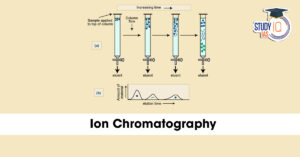Table of Contents
Context: A research team at the Jawaharlal Nehru Centre for Advanced Scientific Research (JNCASR), an autonomous institute of the Department of Science and Technology (DST) has developed a super-fast charging sodium-ion battery (SIB).
What are Sodium-Ion Batteries (SIBs)?
Sodium-ion batteries (SIBs) are rechargeable batteries that function similarly to lithium-ion batteries but use sodium ions (Na⁺) instead of lithium ions (Li⁺) to store and transfer energy.

Working Mechanism
- During Discharge: Sodium ions move from the anode (negative electrode) to the cathode (positive electrode), which accepts the ions and undergoes a reduction reaction.
- Role of Electrolyte: An electrolyte acts as a conductor, allowing the movement of sodium ions and creating a potential difference that drives the electric current.
- During Recharge: The process reverses, and sodium ions migrate back to the anode from the cathode.
Application Of Sodium-ion Battery
- Solar Energy Storage System
- Home Energy Storage System
- Low-Cost Electric Vehicle
- Electric boat
Advantages of SIBs over Lithium-Ion Batteries (LIBs)
- Cost Efficiency: SIBs are potentially 15–20% cheaper than LIBs due to the lower cost of sodium compounds.
- Availability: Uses sodium, which is cheaper and more abundant than lithium, particularly beneficial for India.
- Temperature Tolerance: SIBs operate efficiently across a wider range of temperatures, suitable for deployment in regions with extreme climate variations.
- Enhanced Safety: Unlike LIBs, SIBs can be shipped in a fully discharged (zero voltage) state, significantly reducing fire hazards and the need for complex safety precautions.


 Advanced Air Defence Radars: Types, Comp...
Advanced Air Defence Radars: Types, Comp...
 Ion Chromatography, Working and Applicat...
Ion Chromatography, Working and Applicat...
 Broadly Neutralising Antibodies (bNAbs):...
Broadly Neutralising Antibodies (bNAbs):...

























